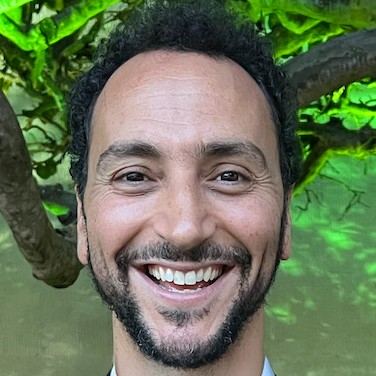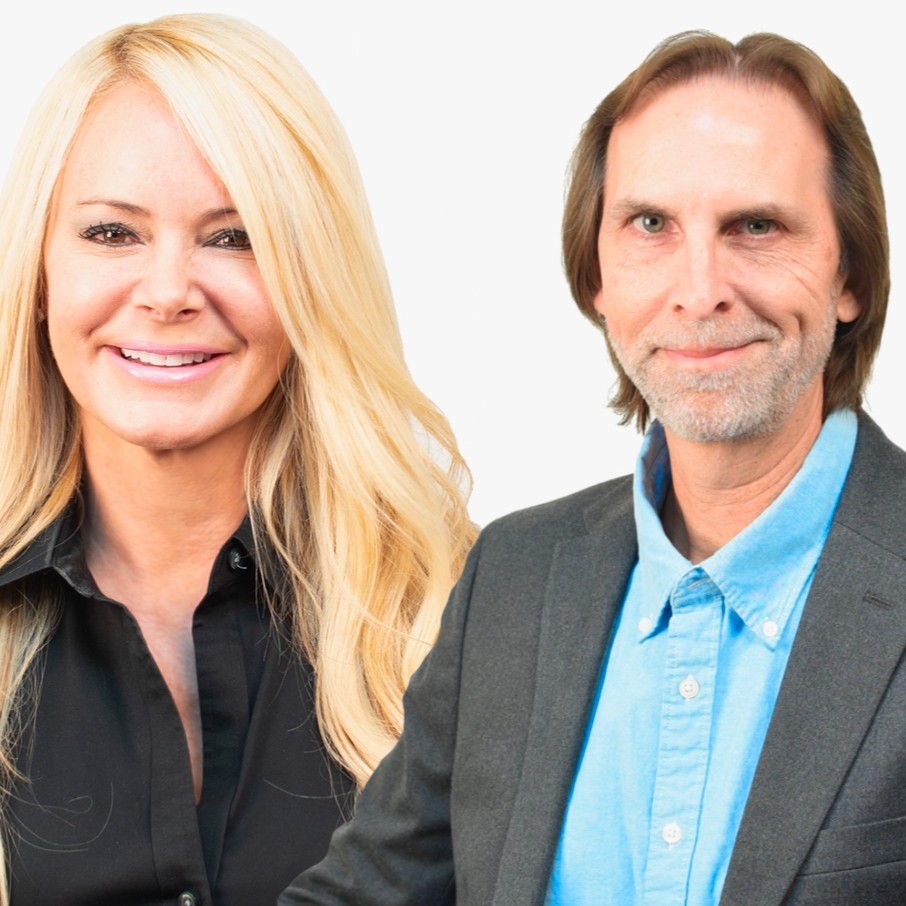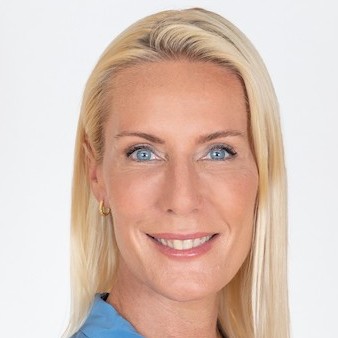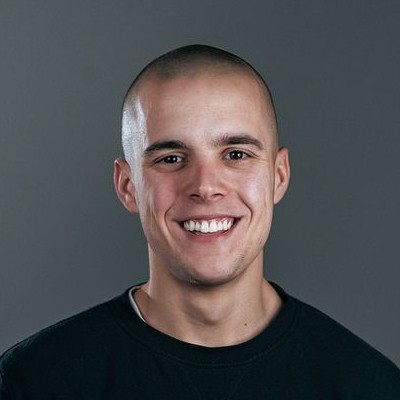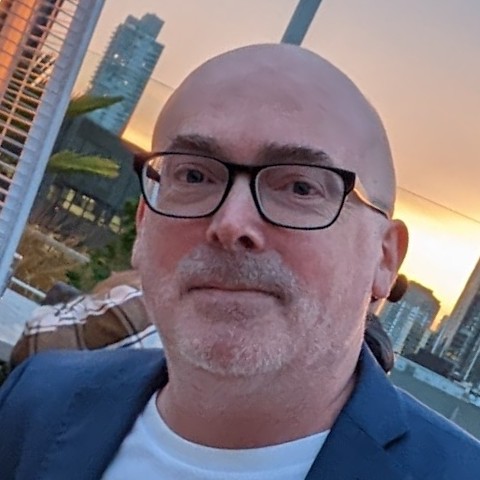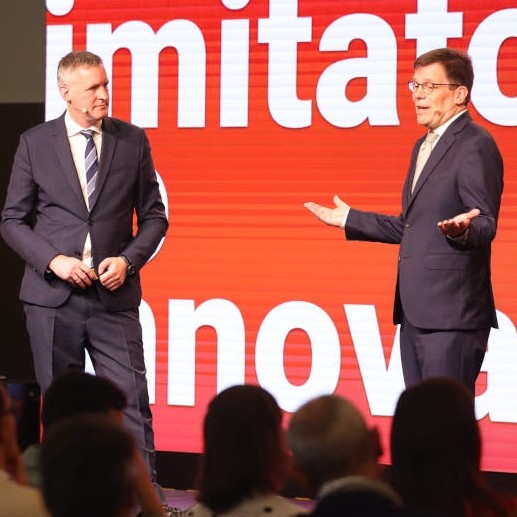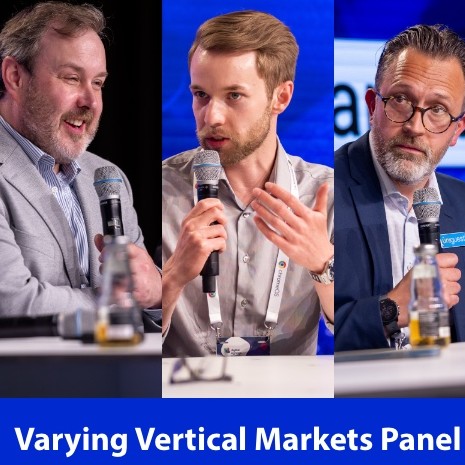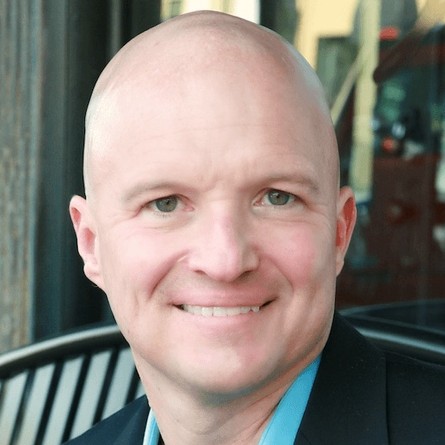Chanan Averbuch, Blue Square X
Description
The 16:9 PODCAST IS SPONSORED BY SCREENFEED – DIGITAL SIGNAGE CONTENT
LED video wall technology is now so pervasive, and there are soooo many vendors, that it is increasingly hard for manufacturers to differentiate and compete.
That's compounded by a lot of manufacturers selling on specs like pixel pitch, and the form factor of their products. Very few, however, spend much if any time talking about the why and what of video wall projects - as in why is this project being considered, what's it for, and also what's going to be on the screen when it gets plugged in.
So I was intrigued when I was in touch with Chanan Averbuch, a South Florida LED industry vet. I learned he'd left his longtime executive sales gig with an LED display vendor to join a spinout that makes premium LED displays, but leads with creative.
The company is called Blue Square X - with the X being short for experience. While most manufacturers just make the stuff, and ship it to integrators, Blue Square plans to bridge a couple of gaps - acting as consultants and producing creative for digital experiences ... with integrator partners doing the final install.
Subscribe from wherever you pick up new podcasts.
TRANSCRIPT
Chanan, thank you for joining me. We've traded messages on LinkedIn and everything else and as we were saying before I turned on the recording, we probably had a brush by, “Hey, how are you doing?” I think at some trade show, but we haven't chatted at length. Can you tell me what your company Blue Square X does, because I'm unfamiliar.
Chanan Averbuch: Sure. Blue Square, I guess you could more or less call it the parent company has been in business for over 10 years. But Blue Sqaure X is a relatively new venture, leveraging more of my background and my partner's background in the space, and inside Blue Sqaure X, I'm focused on the innovation side more so than anything else.
So Blue Square X is displays that are 90 inches and larger on the LCD side, and on the LED side, everything from, 110 inches all the way to unlimited sizes. We have projects we're doing that are a hundred-foot-long LED walls and 40 feet high, concave, convex, curved, all that stuff.
But Blue Square X at the end of the day is not another led company. We're focused on the experience first, which means content first, software second, and LED third.
Yeah, which is quite different because, through the years I've had no end of companies, relate stories about how they sold big LED displays, had them installed and then the customer would look at them and say, “This is great, what should we put on the screen?” like an afterthought.
Chanan Averbuch: I've gotten that over the years, time and time again, somebody will have the brain fart of, “Wow, it would be really cool if we did a sports bar instead of a bunch of TVs, let's do LED.” Okay, and then two weeks before the grand opening, “Wait, what are we doing on this thing from 8 am to 4 pm when we're not watching sports games when there's no live sports?” So we did digital art in those spaces.
So you're, the terminology I use is, a solutions provider in that you're not a pure play integrator because an integrator doesn't tend to think about content or experience so much. There's the odd one that does, but for the most part, we put together the projects we deploy, maybe we manage them, but we don't really think that much about what's on the screen.
Chanan Averbuch: Spot on. I think one of the key issues that I've experienced over almost the last two decades in the AV industry is that most of the channel has thought about how to move a box and has never really thought about what the client is trying to feel from an emotional perspective in a space.
What are they trying to create when someone walks into a space, when they leave a space, how do they want them to feel?
I think in the era now where you're trying to get employees to come back to work, right? It doesn't matter if you're in the US, on the Democratic side or the Republican side, it doesn't make a real difference. If you want employees to come back to work, you have to give them a compelling reason for what it feels like when you come to the office beyond the barista, the coffee bar, and the cereal crap, you gotta have more of an experience too, oh my gosh, I love going to the office. It makes me feel a certain way, and that's where experience matters.
Do you find that many end users have their heads around what they want to do?
Because I know from my consulting experience that I will ask customers what they want to do and why, and quite often they'll lean back in their chairs and think, I haven't really thought about that.
Chanan Averbuch: To be brutally honest with you, what was always my struggle for the last 13 years is trying to get people to understand what to try to make a space feel like, and I've been blessed in the early days now in Blue Square X, when we, in a very stealth mode, went to market, our first projects were actually luxury retail and it's not luxury retail where you would historically imagine where they have a big TV or big LED wall. It's now digital art being built. In an immersive space within luxury retail, there are several stores that we're going to be coming to live with soon with some beautiful case studies, very similar to what we're seeing in the real estate market.
We have a bunch of case studies about to come to market now as well for a luxury real estate sales center. So when someone launches a $100M or $2B project, they want to sell units fast. So having a projector in a sales center doesn't quite do it, but having an immersive theater and immersive LED wall with custom content where it looks like the waves are coming at you and things of that nature in a real way, not the 3D naked eye stuff. I'm talking about the real anamorphic content where it feels like you're buying into a lifestyle. When you're able to translate that, condo sales come along with it.
Quite often, I've also found that those customers who understand that kind of thinking, then have their heads snapped back when they start to understand the cost of doing that.
Is there a lot of work in getting them over the line or do they just understand that this is a $100M development, yes, we're going to spend $250,000 on content or whatever the number is.
Chanan Averbuch: So it's funny that you say that because I think when I was personally going through my own journey and starting in this space, it was hard for me to explain that value, right? The good thing is, that we've already done in a very short period of time, some of these unique experiences where we're able to talk about the cost of capital, and the return on their capital, because in the world of real estate, for example, it's all about return on your investment. And they have interest payments in addition to principal payments that they owe to the bank. So the faster they sell units. The less they owe the bank.
So because we're focused more on the luxury and premium side, and they, I guess you could say the true experiential environments, the price is not necessarily as much of an issue. As the expression goes, price is only an issue in the absence of value, but because we're not trying to sell an LED screen. We're talking about the experience, we're talking about the content first, the software, how to get it there, and the LEDs, how you display it. It's a different conversation that we're having. We're talking usually to the marketing folks. We're talking to the innovation people. We're talking to the people who say, how am I going to get my ROI?
And it's very easy to map that out, and that applies in luxury retail. That applies in real estate, and even because we're focused on the channel still looking with larger AV integrators, we're working with the AV integrators to help translate that value into how it's going to pan out and what it's going to do for their consumer or their buyers, whoever it is in their environments.
So when you say you're working with the AV integrators, you wouldn't describe yourself as an integrator that's competing with them for business but as more of a partner?
Chanan Averbuch: Correct. So, thank God I've been very blessed with working with the AV channel to do control rooms, do experiential environments. That still has not changed for me. The only real difference in what we're doing in Blue Square X is that we are being engaged directly with the sports teams, we're being engaged directly with the architect or the interior designer, and then they'll say, who can execute this with us in addition to the Blue Square X pro services team, right?
We don't run data cables. We don't run power. We don't put pressure on systems. That's not our business. We're not pretending to be an AV integrator. We're still going to be partnering with the AVI SPLs or the AVI Systems or the Diverifieds of the world, et cetera.
Okay. So you would quite possibly maybe own the customer, so to speak, but you're not doing the whole solution stack, you're gonna sub a partner with, I don't know, pull a name out, AVI, SPL, or whoever it may be.
Chanan Averbuch: Yeah, and I think there's a huge value added to that too, because not just because they have 5 employees, it's because, oftentimes when I would historically get a call in, my previous job, it was, “something's not working”. Well, screens are usually pretty dumb, right? If the playback is not working, that may be a different story, or it's often like a hiccup in the crash drone or wha

